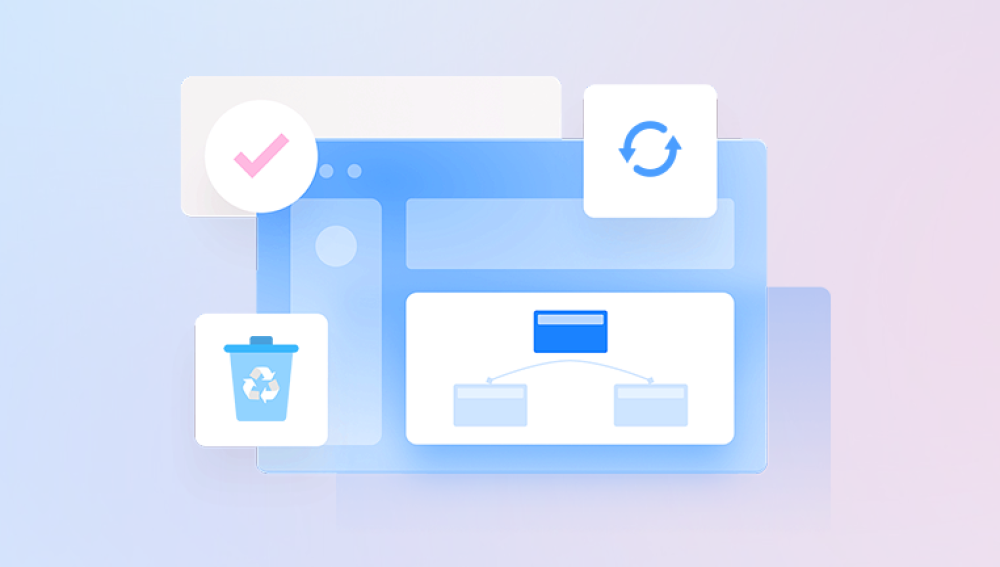If you’ve found yourself in this frustrating and often nerve-wracking situation, you’re not alone. Fortunately, deleted files from an external hard drive are not always lost forever. With the right tools, techniques, and a bit of know-how, there is a good chance you can retrieve them.
When a file is deleted from an external hard drive, it doesn’t vanish immediately. Instead, the operating system simply marks the file's location as "available space" for new data. Until that space is overwritten, the original data remains intact and recoverable. This is why immediate action is crucial the sooner you attempt recovery, the better your chances.
Common Causes of Data Loss on External Drives
Understanding how data gets deleted helps you prevent future loss and choose the best recovery approach. Some common causes include:

Accidental deletion – Files removed manually or during file management.
Formatting errors – Quick formatting wipes the file table but often leaves data untouched.
File system corruption – System crashes or improper ejection can lead to inaccessible drives.
Malware or virus attacks – Malicious software can delete or hide files.
Power failure – Sudden outages during data transfer can corrupt or delete files.
Physical damage – Drops or hardware failure can compromise data integrity (special care needed here).
Step-by-Step Recovery Guide
Step 1: Stop Using the External Hard Drive
Once you realize files are missing, immediately stop using the drive. Continuing to add, delete, or modify files increases the risk of overwriting the deleted data, which can make recovery impossible.
Step 2: Check the Recycle Bin (Windows) or Trash (Mac)
If you deleted the file while the external drive was connected:
On Windows: Open the Recycle Bin and search for your files. If found, right-click and choose Restore.
On macOS: Open the Trash and look for the deleted items. If they are there, right-click and select Put Back.
Note: Files deleted directly from an external drive often bypass these folders and may not appear here.
Step 3: Use File History or Time Machine (If Enabled)
Windows File History: If you’ve enabled File History, navigate to the original folder location, right-click, and choose Restore previous versions. You might be able to restore an earlier version of the file or folder.
Mac Time Machine: Connect your Time Machine backup drive, launch Time Machine, and navigate to the desired date. Select and restore the deleted files.
Step 4: Try Free Data Recovery Software
Drecov Data Recovery
Drecov Data Recovery is a powerful and user-friendly tool designed to help users retrieve deleted files from a wide range of storage devices, including external hard drives, USB flash drives, memory cards, and internal disks. Whether files were lost due to accidental deletion, formatting, corruption, or virus attacks, Drecov Data Recovery offers a reliable solution to recover valuable data quickly and efficiently.
With its intuitive interface, even non-technical users can navigate the recovery process effortlessly. After launching the software, users simply select the affected drive, initiate a scan, and preview the recoverable files. The program supports a wide variety of file types, including documents, photos, videos, audio files, and more. Both quick and deep scan modes are available, ensuring that even deeply buried or fragmented files have a chance of being restored.
Step 5: Recover Files Using the Software
Here’s a general process that works with most recovery tools:
Download and install the recovery software on a different drive—not the external drive you're trying to recover.
Connect the external hard drive to your computer.
Launch the recovery program and select the external drive.
Choose scan type (Quick or Deep). Deep scans take longer but are more thorough.
Preview and select the files you want to recover.
Recover files and save them to a different location (not the same external drive).
Step 6: Try Command-Line Recovery (Advanced)
For more technical users, command-line tools offer additional recovery options:
Windows – CMD (chkdsk or attrib)
You can try checking for file system issues:
cmd
CopyEdit
chkdsk E: /f
Or recover hidden files:
cmd
CopyEdit
attrib -h -r -s /s /d E:\*.*
Replace E: with your external drive letter.
macOS – Terminal (TestDisk)
Install and run TestDisk via Homebrew:
bash
CopyEdit
brew install testdisk sudo testdisk
Follow the on-screen prompts to scan partitions and recover lost files.
Step 7: Consider Professional Data Recovery Services
If:
The drive is physically damaged,
Recovery software fails to detect files,
The drive makes clicking sounds or isn’t recognized,
...it's best to consult a professional data recovery service.
These services have cleanroom facilities and specialized tools to recover data from severely damaged drives. Some notable services include:
DriveSavers
Ontrack
Secure Data Recovery
Gillware
Keep in mind these services can be costly, depending on the complexity and urgency of the recovery.
Tips to Improve Recovery Success
Act quickly: Delay can cause overwriting of deleted data.
Avoid writing to the drive: Even saving recovery software on it can overwrite deleted files.
Use deep scans: For formatted or corrupted drives.
Preview files before recovery: To avoid saving damaged files.
Don’t panic: Carefully following recovery procedures often leads to success.
Preventing Future Data Loss
Once you’ve recovered your files, it’s crucial to adopt best practices to avoid recurrence:
1. Regular Backups
Use automatic backup tools like Windows File History, macOS Time Machine, or third-party cloud services (Google Drive, Dropbox, iCloud).
2. Safely Eject Drives
Never unplug an external hard drive while it’s in use. Use the “Eject” option to prevent corruption.
3. Use Antivirus Protection
Malware can cause file loss, so keep your system protected and updated.
4. Monitor Drive Health
Use tools like CrystalDiskInfo (Windows) or DriveDx (Mac) to monitor S.M.A.R.T. status and detect failing drives early.
5. Avoid Overheating
Keep your external drive in a cool, stable environment. Overheating can lead to mechanical failure.
Losing files from an external hard drive can feel like a disaster, but it’s often reversible with the right approach. Whether the result of accidental deletion, corruption, or formatting, your data likely still exists on the drive waiting to be retrieved.
Begin with built-in utilities like the Recycle Bin or File History. If these don’t help, move on to trusted recovery tools like Recuva or PhotoRec. For more complex scenarios, especially involving physical damage, a professional recovery service may be your best option.




